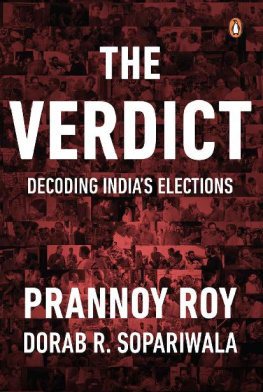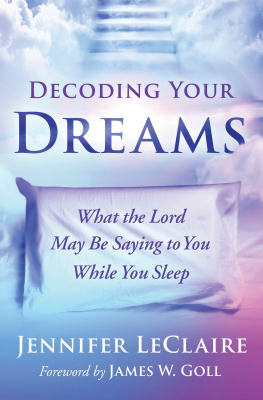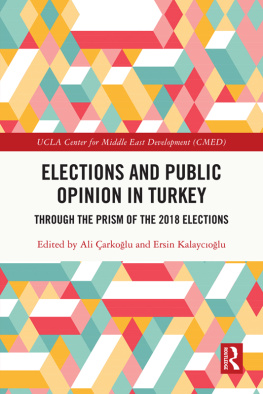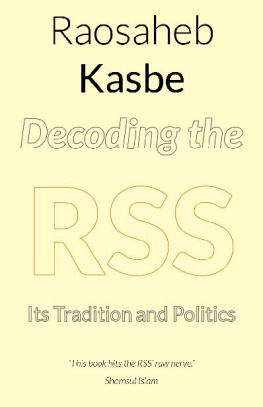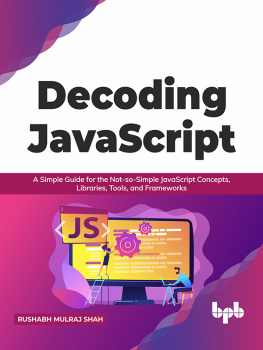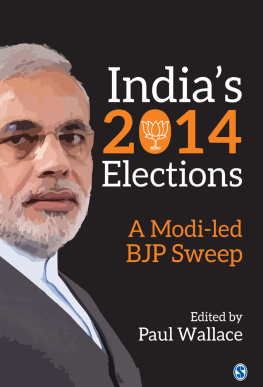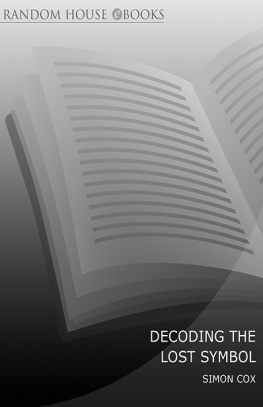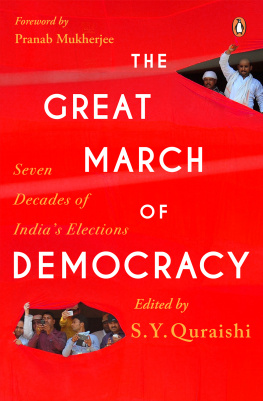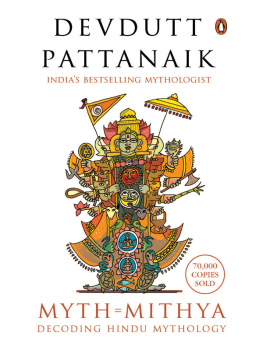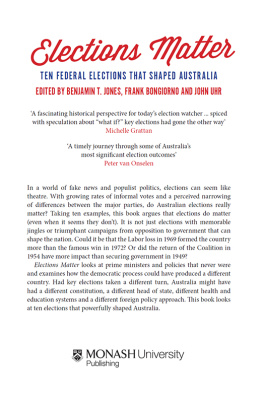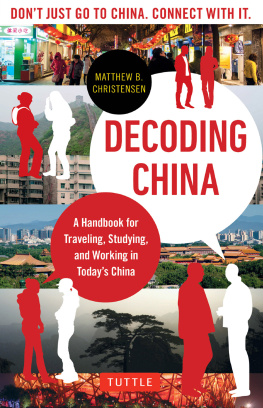Prannoy Roy - The Verdict: Decoding Indias Elections
Here you can read online Prannoy Roy - The Verdict: Decoding Indias Elections full text of the book (entire story) in english for free. Download pdf and epub, get meaning, cover and reviews about this ebook. year: 2019, publisher: Penguin Random House India Private Limited, genre: Politics. Description of the work, (preface) as well as reviews are available. Best literature library LitArk.com created for fans of good reading and offers a wide selection of genres:
Romance novel
Science fiction
Adventure
Detective
Science
History
Home and family
Prose
Art
Politics
Computer
Non-fiction
Religion
Business
Children
Humor
Choose a favorite category and find really read worthwhile books. Enjoy immersion in the world of imagination, feel the emotions of the characters or learn something new for yourself, make an fascinating discovery.
- Book:The Verdict: Decoding Indias Elections
- Author:
- Publisher:Penguin Random House India Private Limited
- Genre:
- Year:2019
- Rating:5 / 5
- Favourites:Add to favourites
- Your mark:
- 100
- 1
- 2
- 3
- 4
- 5
The Verdict: Decoding Indias Elections: summary, description and annotation
We offer to read an annotation, description, summary or preface (depends on what the author of the book "The Verdict: Decoding Indias Elections" wrote himself). If you haven't found the necessary information about the book — write in the comments, we will try to find it.
The Verdict: Decoding Indias Elections — read online for free the complete book (whole text) full work
Below is the text of the book, divided by pages. System saving the place of the last page read, allows you to conveniently read the book "The Verdict: Decoding Indias Elections" online for free, without having to search again every time where you left off. Put a bookmark, and you can go to the page where you finished reading at any time.
Font size:
Interval:
Bookmark:


DORAB R. SOPARIWALA

PENGUIN BOOKS

PENGUIN BOOKS
For
Radhika Roy
Special thanks
Namrata Gupta has worked together with us on elections for over thirty years. Her expertise and knowledge on elections and handling data are unmatched as is her understanding of key issues of Indias elections.
Namrata also handles the extremely complex delivery of election results, data crunching for graphics and information for all our election programmes on television.
We owe the very foundation of this book to Namrata, who has the amazing ability to focus and to work non-stop till we find answers to the numerous questions that we raise with alarming regularity. It is her dedication and meticulous attention to detail that, in fact, gave us the confidence to embark on this project.
Namrata is the backbone of this book.
I first saw India in 1967 during a brief stopover on the way to Australia. I particularly remember being invited to a small, unpretentious party in a Delhi suburb by Jagdish Bhagwati, a fellow of Nuffield College. After a few minutes at the gathering, my wife, Marilyn, and I both agreed that it felt like the most brilliant congregation of people wed ever been fortunate enough to encounter. I made the same comment to one of our company who suggested: Its not surprising. Five of the countrys cleverest economists are here.
However, my love affair with Indian politics only really developed many years later, in 1983. I had received a letter out of the blue from a young Indian economist, Prannoy Roy. Along with a colleague, Ashok K. Lahiri, he wanted advice on the study of elections. They were both at the Delhi School of Economics and they hoped to learn from my British experience about what could be done in the political field. I remember meeting them at the airport in Delhi where they announced: Were going to Hyderabad tonight. There we followed a state election where voting machines were being used for the first time in India. The results came in very slowly over a couple of days. My experience with British elections led me to foresee a landslide against the Congress on the basis of just the first three local results, all of which were showing big swings away from the ruling party. The principle of uniform swing, I suspected, really could apply in India, something which local election watchers seemingly hadnt recognized. I was right. Contrary to most forecasts, the ruling Congress party was trounced. Id met a number of Indian politicians in the interim who hadnt thought such an outcome possible.
After this excitement, I promised Prannoy and Ashok that I would return in 1984 to follow the next nationwide election campaign. This occurred in the same year as the siege and massacre at the Golden Temple in Amritsar, the Union Carbide tragedy in Bhopal and the assassination of Indira Gandhi. Rarely until then had three such traumatic events in a single year in India made headlines the world over.
I had at that point seen elections in several countries, from the USA and Australia to, of course, the United Kingdom (UK). India was something else entirely: its scale in terms of population, with its vast range of linguistic, ethnic and religious groupings. But what was also remarkable was how much my British experience could still sometimes be relevanthow the mood of the nation did partly swing each time according to national sentiments as well as local ones.
The project to produce a book about the 1984 contest was driven above all by Prannoy, a dynamic character whose energy and fascination with the statistical basis of electoral analysis proved infectious to everyone around him. It was called India Decides and was a compilation of all the results of elections to the Lok Sabha until 1985, and was at first little more than a footnote, which we self-published. It was only later produced more formally as a bound edition, thanks to the input of the journal, India Today.
India was a young democracy then, only three decades or so into its existence. And there were no working psephologists in the country. No one had yet aggregated all the results of the countrys elections in one place. Indeed the concept of psephology was largely unknown to the public at large in what had until then mostly been a series of electoral processions for the NehruGandhi family. That was the era of strong incumbent advantage of course, since there have been huge swings in public sentiment towards anti-incumbent revolt and back again. Prannoys brilliance and receptiveness to my academic suggestions included his technical aptitude in those early years of computing and TV graphics, figuring out ways to distil and present complex information to a general audience. He had a tremendous willingness to question the old norms of electoral interpretation, in a time of what looked like perpetual Congress ascendancy.
In psephological terms, what the book also helped to demonstrate was the extent to which the concept of uniform swingwhere swing in one small region tended to be duplicated around the countrydid actually apply in India as it had been shown to in the UK. On the whole, what the numbers revealed was that uniformity usually operated on a state-by-state level, and much less so nationwide where, for example, north and south trends could work in opposite directions.
This mattered because polling around Indian elections was remarkably unreliable in those days, until Dorab R. Sopariwala entered the scene. Indeed, it may not be too boastful to suggest that our work, and above all Prannoys pioneering electoral broadcasts, contributed largely to the understanding of how more reliable polling needed to be conducted.
We produced a number of subsequent editions of our book, and I also helped him in the studio to produce some of Indias first independent electoral TV broadcasts. To the extent that I had a job then, it was to help communicate the idea of how small narrow local results could be understood as part of a much bigger national picture, to hand over the experience that I had painfully acquired over many years commenting on British elections, reducing complicated statistical patterns to a digestible conclusion.
Whenever I visited Delhi, I stayed at the India International Centre behind Lodhi Gardens, a curiously collegiate environment where frenzied meetings would take place amongst our team, discussing how to compile, enhance and amend the book, and prepare the upcoming electoral programmes. I remember the delight of working with Prannoy in successive Lok Sabha contests, and both of us educating each other, though I had much more to learn.
Those early trips left an indelible impression and I found myself back in Delhi many times thereafter, to enjoy the energy of the campaigns and the enthusiasm of Prannoy, Radhika and the rest of the emerging team at NDTV who helped to make elections in the country, for the first time, truly comprehensible to the TV-viewing public. The world of Indian politics has moved on from the Congress-dominated era, with the rise of a variety of trendsthe politics of social media, the growing influence of female voters, new populist leadersand now is clearly a very timely moment for
Font size:
Interval:
Bookmark:
Similar books «The Verdict: Decoding Indias Elections»
Look at similar books to The Verdict: Decoding Indias Elections. We have selected literature similar in name and meaning in the hope of providing readers with more options to find new, interesting, not yet read works.
Discussion, reviews of the book The Verdict: Decoding Indias Elections and just readers' own opinions. Leave your comments, write what you think about the work, its meaning or the main characters. Specify what exactly you liked and what you didn't like, and why you think so.

